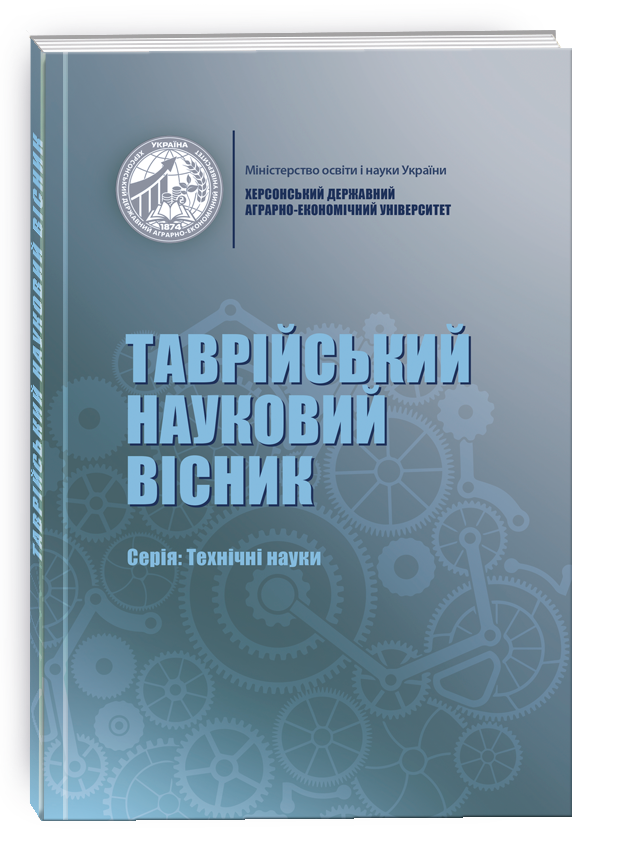INNOVATIVE APPROACH TO THE PRODUCTION OF RYE-WHEAT BREAD USING CO₂ EXTRACTS OF AROMATIC-SPICY COMPONENTS OF DILL AND SESAME
DOI:
https://doi.org/10.32782/tnv-tech.2025.1.38Keywords:
CO₂ extracts, dill, coriander, rye-wheat bread, plant extracts, biological valueAbstract
Bread remains an important source of energy, proteins, carbohydrates, fiber, vitamins, and minerals, making it an essential part of the human diet. Particularly valuable is bread made from whole grain and rye flour, which is rich in fiber that promotes digestion regulation, weight control, and blood sugar balance.The addition of CO₂ extracts of dill and coriander to rye-wheat bread enhances its biological value by preserving antioxidants, essential oils, and other beneficial compounds. The use of CO₂ extraction ensures high-quality extracts and their effectiveness in enriching baked goods. The proposed technology for producing rye-wheat bread with plant extracts is scientifically innovative and practically significant, as it combines innovative approaches with traditional methods.Optimal additive concentrations were determined to achieve a balance between improved taste properties and the preservation of beneficial substances: Formula No. 1 includes 0.2 g of CO₂ extracts, while Formula No. 2 contains 0.1 g of CO₂ extracts with an additional blend of dried thyme and oregano herbs. Practical significance. The developed recipe and technology can be successfully implemented in the baking industry to create functional products with additional health benefits. This product meets the growing demand for healthy nutrition and enhances the competitiveness of manufacturers. The production of bread with an enriched composition opens new opportunities for the food industry, focusing on consumer health support. To achieve the set goal, the following tasks were pursued: Review of modern bread production technologies incorporating plant extracts. Investigation of the CO₂ extraction process of dill and coriander and evaluation of the bioactive components in the obtained extracts. Development of a rye-wheat bread recipe with added CO₂ extracts of dill and coriander. Study of the impact of added extracts on the chemical composition, organoleptic properties, and functional characteristics of bread.Determination of safety and quality indicators of the developed product.Assessment of potential consumer appeal and practical application of the proposed technology in the baking industry.
References
Wandersleben T., Morales E., Burgos-Díaz C. Enhancement of functional and nutritional properties of bread using a mix of natural ingredients from novel varieties of flaxseed and lupine // LWT. 2018. Т. 91. DOI: 10.1016/j.lwt.2018.01.029.
Rosenberg H. R., Rohdenburg E. L., Baldini J. T. The fortification of bread with lysine. III. Supplementation with essential amino acids // Archives of Biochemistry and Biophysics. 1954. Т. 49, № 2. С. 263-267. DOI: 10.1016/0003-9861(54)90196-4.
Zhou J., Liu J., Tang X. Effects of whey and soy protein addition on bread rheological property of wheat flour // Journal of Texture Studies. 2017. Т. 49, № 4. DOI: 10.1111/jtxs.12275.
Бортнічук О. В., Гавриш А. В., Нєміріч О. В., Доценко В. Ф. Інноваційні підходи в технології хлібобулочних виробів з сухою молочною сироваткою // Технологія і безпека продуктів харчування. 2015. № 2. С. 97-192.
Писарець О., Семенова А., Дробот В. Обґрунтування ефективності застосування молочної сироватки в технології пшенично-кукурудзяного хліба // Продовольчі ресурси. 2017. Т. 5, № 8. С. 81-85.
Павленко А. А., Бортнічук О. В., Гавриш А. В. Використання сухої молочної сироватки у виробництві хлібобулочних виробів // Нові ідеї в харчовій науці – нові продукти харчовій промисловості: матеріали міжнар. наук. конф., 13-17 жовтня 2014 р. Київ: НУХТ, 2014. С. 630.
Антебура А. В., Причина Ю. С., Суворов Р. В., Мирошниченко В. А., Олексієнко В. О. Хлібобулочні вироби з використанням нетрадиційної сировини // Збірник наукових праць магістрантів та студентів. Мелітополь: ТДАТУ, 2021. С. 13-15.
Yousif A. M., Cranston P., Deeth H. C. Incorporation of bovine dry blood plasma into biscuit flour for the production of pasta // Food Chemistry. 2016. Т. 192. С. 950-957.
García-Segovia P., Igual M., Martínez-Monzó J. Physicochemical Properties and Consumer Acceptance of Bread Enriched with Alternative Proteins // Foods. 2020. Т. 9, № 7. DOI: 10.3390/foods9070933.
Oprea O. B., Sannan S., Tolstorebrov I., Claussen I. C., Gaceu L. Effects of Fish Protein Hydrolysate on the Nutritional, Rheological, Sensorial, and Textural Characteristics of Bread // Foods. 2024. Т. 13, № 5. DOI: 10.3390/foods13050698.
Кінселла Д. Е. Функціональні властивості соєвих білків // J Am Oil Chem Soc. 1979. Т. 56. С. 242-258. DOI: 10.1007/BF02671468.
Toklu F., Sen Gupta D., Karaköy T., Özkan H. Bioactives and Nutraceuticals in Food Legumes: Nutritional Perspective // Breeding for Enhanced Nutrition and Bio-Active Compounds in Food Legumes. Springer, Cham, 2021. С. 229-245. DOI: 10.1007/978-3-030-59215-8_10.
Zhang W., Boateng I. D., Xu J., Zhang Y. Proteins from Legumes, Cereals, and Pseudo-Cereals: Composition, Modification, Bioactivities, and Applications // Foods. 2024. Т. 13, № 13. DOI: 10.3390/foods13131974.
Kaim U., Goluch Z. S. Health Benefits of Bread Fortification: A Systematic Review of Clinical Trials according to the PRISMA Statement // Nutrients. 2023. Т. 15, № 20. DOI: 10.3390/nu15204459.
Rebellato A. P., Klein B., Wagner R., Lima Pallone J. A. Fortification effects of different iron compounds on refined wheat flour stability // Journal of Cereal Science. 2018. Т. 82. С. 1-7.
Khoshgoftarmanesh A., Dara A., Kadivar M. Some nutritional quality and sensory attributes of wheat flours fortified with iron and zinc // Journal of Food Processing and Preservation. 2009. Т. 34, № 2. С. 289-301. DOI: 10.1111/j.1745-4549.2008.00324.x.
Winkels R. M., Brouwer I. A., Clarke R., Katan M. B., Verhoef P. Bread cofortified with folic acid and vitamin B12 improves the folate and vitamin B12 status of healthy older people: a randomized controlled trial // The American Journal of Clinical Nutrition. 2008. Т. 88, № 2. С. 348-355.
Сімакова О. О., Никифоров Р. П. Розробка новітніх технологій виробів з борошна з заданими властивостями: монографія. Кривий Ріг: ДонНУЕТ, 2018. 146 с.
Batifoulier F., Verny M.-A., Chanliaud E., Rémésy C., Demigné C. Effect of different breadmaking methods on thiamine, riboflavin and pyridoxine contents of wheat bread // Journal of Cereal Science. 2005. Т. 42, № 1. С. 101-108.
Сімакова О. О., Никифоров Р. П. Розробка новітніх технологій виробів з борошна з заданими властивостями: [Текст]: монографія. Кривий Ріг: ДонНУЕТ, 2018. 146 с.
Koneva S. та ін. The Effect of Flaxseed Flour on the Rheological Properties of Dough Made of Flaxseed and Wheat Flour and Bread Quality // Food Processing Techniques and Technology. 2019. Т. 49, № 1. С. 85-96. DOI: 10.21603/2074-9414-2019-1-85-96.
Romankiewicz D., Hassoon W. H., Cacak-Pietrzak G., Sobczyk M., Wirkowska-Wojdyła M., Ceglińska A., Dziki D. The Effect of Chia Seeds (Salvia hispanica L.) Addition on Quality and Nutritional Value of Wheat Bread // Journal of Food Quality. 2017. DOI: 10.1155/2017/7352631.
Zlateva D., Stefanova D., Chochkov R., Ivanova P. Study on the impact of pumpkin seed flour on mineral content of wheat bread // Food Science and Applied Biotechnology. 2022. Т. 5, № 2. С. 131-139. DOI: 10.30721/fsab2022.v5.i2.177.
Turkut G. M., Cakmak H., Kumcuoglu S., Tavman S. Effect of quinoa flour on gluten-free bread batter rheology and bread quality // Journal of Cereal Science. 2016. Т. 69. С. 174-181.
Amini A. та ін. The Effect of Bread Fortification with Whole Green Banana Flour on Its Physicochemical, Nutritional and In Vitro Digestibility // Foods. 2020. Т. 9, № 2. DOI: 10.3390/foods9020152.
Шарова І. В. Використання екстрактів пряно-ароматичної сировини в технологіях молекулярної кулінарії // Проблеми формування здорового способу життя у молоді: зб. матеріалів Х Всеукр. наук.-практ. конф. молодих учених та студентів з міжнар. участю, Одеса, 29 верес.–1 жовт. 2017 р. / Одес. нац. акад. харч. технологій; гол. ред. Б. В. Єгоров. Одеса, 2017. С. 128-129.
Новікова Н. В., Драга А. Ю. Використання пряно-ароматичної сировини в хлібопеченні // Праці ТДАТУ. 2020. Вип. 20, Т. 1. С. 187-193. DOI: 10.31388/2078-0877-20-1-187-193.
Іоргачова К. Г., Лебеденко Т. Є. Хлібобулочні вироби оздоровчого призначення з використанням фітодобавок: [Текст]: монографія. Київ: К-Прес, 2015. 464 с. ISBN 978-966-4375-82-2.
Бондарчук З., Куриленко Ю., Андронович Г. Використання рослинної сировини як комплекс біологічно активних речовин для напоїв функціонального призначення // Інновації та технології в сфері послуг і харчування. 2022. Вип. 2(6). С. 38-43. DOI: 10.32782/2708-4949.2(6).2022.7.
Gafurov K., Muhammadiev B., Mirzaeva S., Kuldosheva F. Отримання екстрактів з рослинної сировини двоокисом вуглецю // Food Science and Technology. 2020. Т. 14, № 1. DOI: 10.15673/fst.v14i1.1651.
Iorgacheva K., Lebedenko T., Kozhevnikova V. Using phyto-extracts for solving baking industry issues // Scientific Works of NUFT. Food Technology. 2017. Т. 23, № 5, Ч. 2. С. 187-197. DOI: 10.24263/2225-2924-2017-23-5-2-24.
Снєжкін Ю. Ф., Дабіжа Н. О., Дмитренко Н. В., Малащук Н. С. Сорбційні та термодинамічні властивості пряно-ароматичних рослин як об’єктів сушіння // Thermophysics and Thermal Power Engineering. 2023. Т. 49, № 2. С. 5-14. DOI: 10.31472/ttpe.2.2023.1.
Андронович Г. Використання рослинної сировини як комплекс біологічно активних речовин для напоїв функціонального призначення // Інновації та технології в сфері послуг і харчуванні. 2022. № 22.
Садовнік М. Використання пряно-ароматичної сировини в технології виробництва хліба // Збірник студентських наукових праць. Сільськогосподарські науки. 2024. № 3(15).







